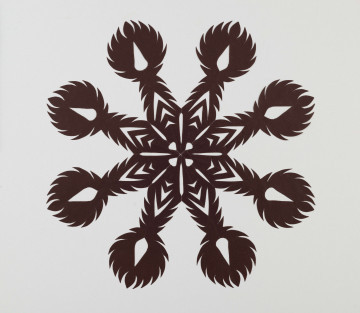
Cutout
2011
National Museum in Lublin
Part of the collection: European porcelain 18th/19th c.
The plate comes from the most famous porcelain service made between 1737 and 1742 at the Royal Manufactory in Meissen. The service was enormous, consisting of over 2200 items. It included various dishes for dinner, coffee and tea, spices, sweets and fruit, and decorative objects, for example, candlesticks. Its primary value is the rich artistic decoration connected with the element of water: mythical sea deities, shells, plants and water birds, especially swans, to which it owes its name. Gilded and coloured ornaments complement it with the combined coats of arms of Brühl and Kolovrat among them. Henryk Brühl ordered it on the occasion of his marriage to Maria Anna Kolowrath-Krakowský. The ordering party came from a bourgeois family and started his career at the court modestly as a footman. His cleverness, combined with a lack of scruples, allowed him in a short time to achieve the position of the royal favourite, the title of nobility and a fortune estimated at over a million thalers. He loved luxury, collected works of art and precious artefacts, and owned, among other things, 150 porcelain services, but he became most famous for the first one, which until World War II remained in the hands of his family, settled in the estate of Brody in the Lubuska Region. The last time it appeared on the table was on 9 April 1940, on the occasion of Maria Wiktoria von Brühl's wedding. After the wedding, the bride's relatives washed the valuable tableware with their own hands, as they were afraid to entrust it to the servants. Unfortunately, a few years later, after the invasion of the Soviet army, the courtyard was covered with piles of broken porcelain, and the surviving 20 percent of the service was dispersed, only to fetch exorbitant prices on the art market years later.
Johann Joachim Kändler (1706-1775), son of a pastor from Fischbach, was the designer and builder of the major parts. Already at the age of 25 he had become a court sculptor and porcelain modeller in Meissen. He gained recognition and a considerable fortune. He did not learn how to be economical, as he is said to have died in debt.
Barbara Czajkowska
Author / creator
Dimensions
cały obiekt:
Object type
plate
Technique
glaze-coating
Material
porcelain
Creation time / dating
Creation / finding place
Owner
The National Museum in Lublin
Identification number
Location / status

2011
National Museum in Lublin

2011
National Museum in Lublin

2011
National Museum in Lublin
DISCOVER this TOPIC
National Museum in Lublin
DISCOVER this PATH
Educational path